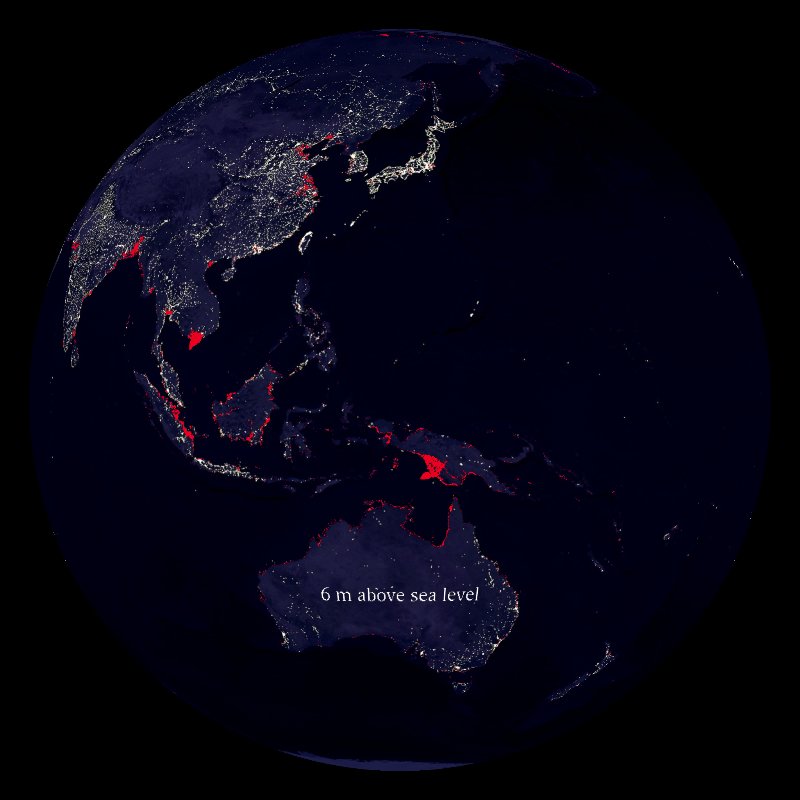Sea Level Rise: Impact of 6 meter (red)

This model projects what areas of land would become submerged by a 6-meter rise in sea level. Point students toward low-lying islands and coastal cities using the Capital Cities Overlay.
The Republic of Maldives is an island nation in the Indian Ocean with an average elevation of 7 feet above sea level.
The President Mohamed Nasheed held a cabinet meeting about global carbon emissions underwater to highlight how pressing the issue is for the sea-level nation. With about 40% of the world’s populations living within 100km of the coast, rising sea levels are a serious risk. Though melting ice from ice sheets and glaciers is a major contributor, increasing temperature of the ocean is the largest cause of sea level rise. This is because as temperature increases, the molecules in water excite and move away from one another, expanding the volume of water. When this happens on a global scale, it leads to the sea level rise impacts we see today and will see in the future.
Download an SOS playlist for this module.

This model projects what areas of land would become submerged by a 6-meter rise in sea level. Point students toward low-lying islands and coastal cities using the Capital Cities Overlay.

This gives recent historical context for the current and future issues we face. Researching deeper will give you an idea of whether this trend is expected to stay the same (higher levels on the western Pacific Ocean basin not on the eastern side) or flip the other way.